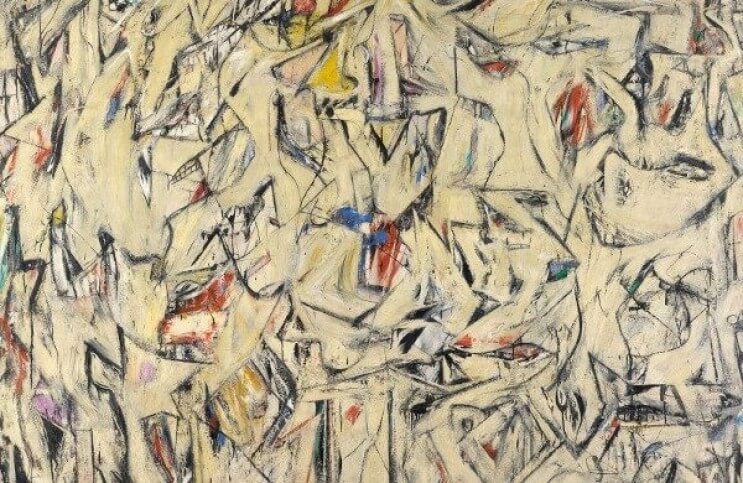
Willem de Kooning - The Man of Many Contradictions
Willem de Kooning is easy to love and easy to hate. De Kooning is an epic figure in the story of 20th Century abstract art, partly because of his work and partly because of his personality. Born in 1904 and died in 1997, his life book-ended the century. Though not an American citizen for most of his life, he nevertheless epitomized the American myth. He was dashing and rugged, yet sensitive. He worked hard and played hard. He was a brilliant and curious intellectual, and also a prolific lover. He attracted people to himself then rewarded them generously with his honesty and openness. He was an influencer who allowed others to influence him. In the 70 years he painted professionally, De Kooning created one of the most diverse and viscerally thrilling bodies of work of his generation. But De Kooning haters allege he was a cheater, a scoundrel and a drunk. And then there is the fact that he painted what has become one of the most expensive work of art sold thus far, an abstract landscape named Interchange. That painting confuses some viewers who do not understand its importance, and annoys others who consider it derivative of the work of one of his lovers, Mary Abbott. But beyond the hate, jealousy, criticism, suspicion and love just lies an artist: someone who began his art life in earnest at age twelve and never stopped creating, even when ravaged by Alzheimer's in his 80s.
What Is An Artist?
On 18 February 1949, at age 44, Willem de Kooning was invited by Barnett Newman (or Barney as he called him) to deliver what would be his first public lecture. The topic was desperation. De Kooning opened with the line, “My interest in desperation lies only in that sometimes I find myself having become desperate. Very seldom do I start out that way.” De Kooning went on to describe the creative process as inherently desperate, since all thinking and action are the antithesis of harmony and contentment. He described artists as being oppressed by ideas, engulfed by them, forever thinking, forever acting, and therefore forever desperate.
Much of his own desperation rose from the fact that he was haunted by the need to originate and plagued by a fear of becoming stagnant. By the end of the lecture, De Kooning defined what an artist is. He said, “An artist is someone who makes art too. He did not invent it.” But how can an artist be original when art is just an endless process of mimicry, a slight variation of what has been done in the past? The answer, according to De Kooning, is sincerity and humility. An artist innovates through honest self-expression, and acknowledges that artists are always part of something bigger: a community, a history, a movement. In other words, nothing an artist does is done alone.
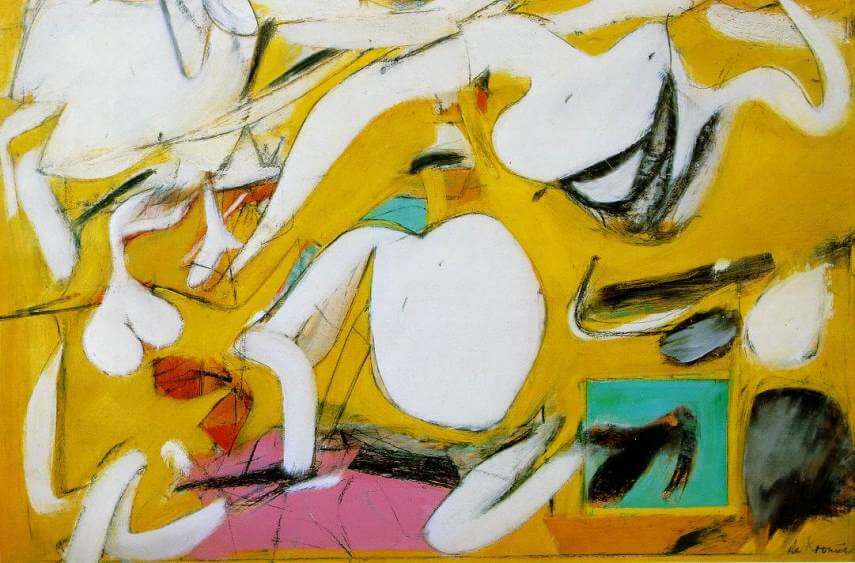 Willem de Kooning - Fire Island, c. 1946, Oil on paper, 48.3 x 67.3 cm, Margulies Family Collection © The Willem de Kooning Foundation, New York / VEGAP, Bilbao, 2016
Willem de Kooning - Fire Island, c. 1946, Oil on paper, 48.3 x 67.3 cm, Margulies Family Collection © The Willem de Kooning Foundation, New York / VEGAP, Bilbao, 2016
Becoming American
Willem de Kooning committed himself to art at a young age. Born in Rotterdam, Netherlands, he quit school at age twelve and began an apprenticeship with a design firm called Gidding & Zonen. The next year he began a routine of working at the design firm in the day and taking night courses at the Rotterdam Academy of Fine Arts and Techniques. By age 16, De Kooning had a paying job working as an artist for a department store. And by age 20, he moved to Brussels to take a job working for a decorating firm.
But despite such early success, De Kooning did not yet consider himself an artist. He was not even sure that he wanted to make fine art at all. He had ambitions of simply making a good living and having an exciting life. And with those ideas firmly in his head, at age 22 he stowed away on a British freight ship bound for a stopover on the east coast of America. When the boat docked, he entered the country illegally and headed to Hoboken, New Jersey. There the Seamen’s Church Institute, an organization committed to helping Netherlanders, took him in. They gave him a place to live and helped him find work as a house painter.
 Willem de Kooning - Untitled (Woman in Forest), ca 1963, Oil on paper, mounted on Masonite, © The Willem de Kooning Foundation, New York / VEGAP, Bilbao, 2016
Willem de Kooning - Untitled (Woman in Forest), ca 1963, Oil on paper, mounted on Masonite, © The Willem de Kooning Foundation, New York / VEGAP, Bilbao, 2016
Earning a Life
After just one year in America, De Kooning found work at a design firm in New York City and was able to move to Manhattan. He had successfully accomplished the enormous feat of coming to America and establishing himself in one of the most competitive cities in the world. But once in the city he began making friends with real artists, like Stuart Davis, John Graham, and Arshile Gorky. The work these artists were doing seemed vitally important and meaningful to De Kooning, who gradually over the next several years became convinced that although he was making a good living, he had not yet made for himself the right life.
In 1935, at age 31, De Kooning walked away from his professional design career and signed up as an artist with the Works Progress Administration. He took a job as a muralist with the group. There he met the artist Fernand Léger and began to establish himself as an artist with a uniquely modern style. That choice to devote himself solely to art changed everything for De Kooning. In the next five years, he met the young painter Elaine Fried, who would eventually become his first wife, and the painter Franz Kline, who would become his dearest friend.
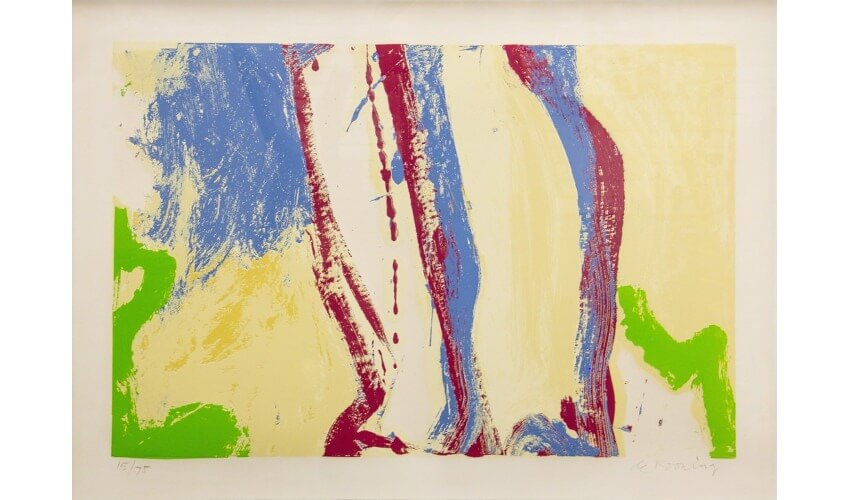 Willem de Kooning - Untitled, 1972, From the series 15-75, Screenprint in color on Arches wove paper, 24 1/8 × 36 1/8 in, photo credits of Galerie d'Orsay, Boston
Willem de Kooning - Untitled, 1972, From the series 15-75, Screenprint in color on Arches wove paper, 24 1/8 × 36 1/8 in, photo credits of Galerie d'Orsay, Boston
Mature De Kooning
Although he established himself quickly as an intellectual within the community of serious artists working in Post War New York, it was not until he was in his 40s that Willem de Kooning arrived at what could be considered a mature abstract painting style. He first revealed that style in 1948, in his first solo gallery show, at Charles Egan Gallery. In the show were his famous black paintings, which according to legend he painted because he was too poor to pay for other pigments. The show was covered positively in the press, and the New York MoMA purchased one of those black paintings.
But sadly, 1948 was also the year that Arshile Gorky committed suicide. Gorky had become a primary mentor and dear friend to De Kooning. The two shared a common anxiety about painting—that desperation expressed so poignantly in that first public lecture De Kooning delivered. Nonetheless, despite his anxiety and the loss of his friend, De Kooning flourished over the coming years. He co-founded The Club, a.k.a. the 8th Street Artists Club, a legendary gathering place for the brightest thinkers in the New York art scene. And in 1950, he completed his monumental canvas Excavation, which won him the Logan Medal and Purchase Prize, given by the Art Institute of Chicago, cementing his reputation as a key member of the New York School and bringing him national recognition.
 Willem de Kooning - Painting, 1948, enamel and oil on canvas, 42 5/8 x 56 1/8 in., Digital Image © The Museum of Modern Art, New York
Willem de Kooning - Painting, 1948, enamel and oil on canvas, 42 5/8 x 56 1/8 in., Digital Image © The Museum of Modern Art, New York
The Women of De Kooning
In the late 1940s, just as he was achieving success as an abstract painter, De Kooning was also being tugged back toward his figurative roots. And in 1950 he shocked many of his admirers and friends by exhibiting a series of quasi-figurative works now referred to as his Woman paintings. The Woman paintings combined the gestures and stylistic elements of his previous work, but they added primal figurative representations of what De Kooning considered to be iconic female images.
The energy and violence of his markings combined with the grotesque-looking imagery caused many viewers to assume the Woman paintings expressed anger and violence toward females. But De Kooning considered himself a champion of women. He had many lovers, and did not feel his behaviors or his paintings were misogynistic. He considered his Woman paintings to be mythological and filled with reverence and whimsy. Today these paintings are perhaps his best-known works. But at the time it was considered heretical by many artists and critics for an avant-garde member of the abstract New York School to reverse course and return to figurative art.
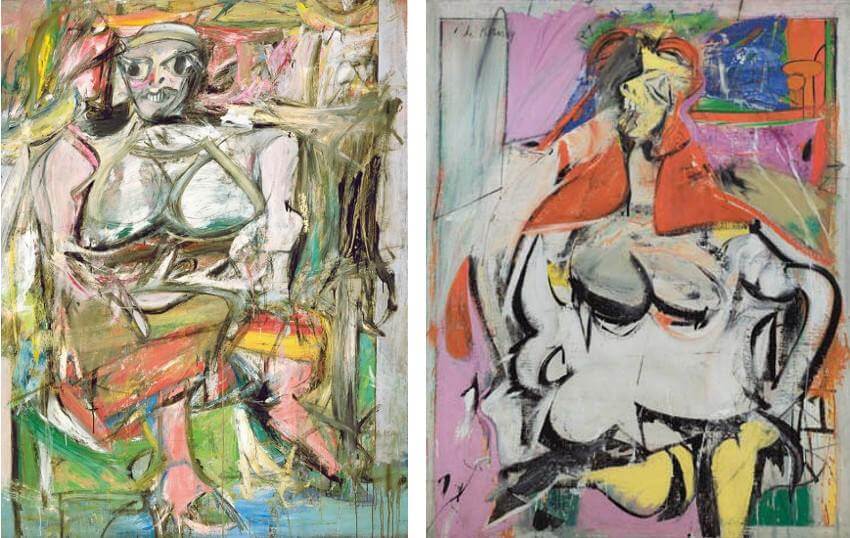 Willem de Kooning - Woman I, 1950–2 (Left) and Willem Woman, 1949 (Right), © The Willem de Kooning Foundation, New York / VEGAP, Bilbao, 2016
Willem de Kooning - Woman I, 1950–2 (Left) and Willem Woman, 1949 (Right), © The Willem de Kooning Foundation, New York / VEGAP, Bilbao, 2016
The Only Constant
About five years into his Woman series, De Kooning again changed his style, this time back toward abstraction. Perhaps inspired by ideas he had been exchanging with the painter Mary Abbott, he began painting what he called abstract landscapes. These landscapes manifested over three distinct periods, respectively called Urban, Parkway and Pastoral. But there was little if anything figurative in these paintings that would suggest that De Kooning was literally attempting to paint landscapes.
Rather, his landscapes convey an abstracted sense of his own interaction with natural and built environments. They express a certain detachment, and perhaps calm. De Kooning had begun summering in the Hamptons around 1952, and would eventually move permanently to a remote section of Long Island in the 1960s. These landscape paintings were begun in the midst of that transition, and seem to express an attraction to something outside of the manic rat race of New York City. And they embody the most oft quoted sentiment for which De Kooning is remembered: “You have to change to stay the same.”
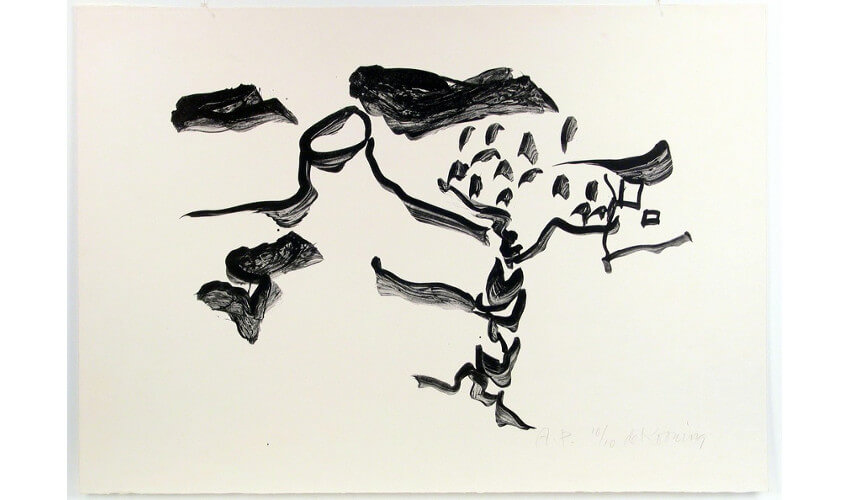 Willem de Kooning - Japanese Village, 1971, Lithograph, 28 1/4 × 40 in, photo credits of Sragow Gallery, New York
Willem de Kooning - Japanese Village, 1971, Lithograph, 28 1/4 × 40 in, photo credits of Sragow Gallery, New York
De Kooning vs. Alzheimer's Disease
Throughout the 1960s and 70s, De Kooning continually evolved his artistic activities. He experimented with lithography and sculpture, and made a large number of works on paper. He flowed freely between abstraction and figuration, exploring whatever approach and subject matter his passions called for. He remained committed to the idea that he alone could determine what type of art he made, stating, “It’s really absurd to make an image, like a human image, with paint today, when you think about it…But then all of a sudden it was even more absurd not to do it. So I fear that I’ll have to follow my desires.”
De Kooning continued following his desires to the end. In the early 1980s, he quit alcohol and anti-depressants and his painting style subsequently changed, becoming sparser and faster. Those close to him believed he was showing signs of dementia, but he disregarded criticism and avidly painted vibrant, colorful works that, in the spirit of masters like Matisse, were the most simplified and pared down he had ever created. Even after exhibiting signs of Alzheimer's Disease, for two more years he continued to paint.
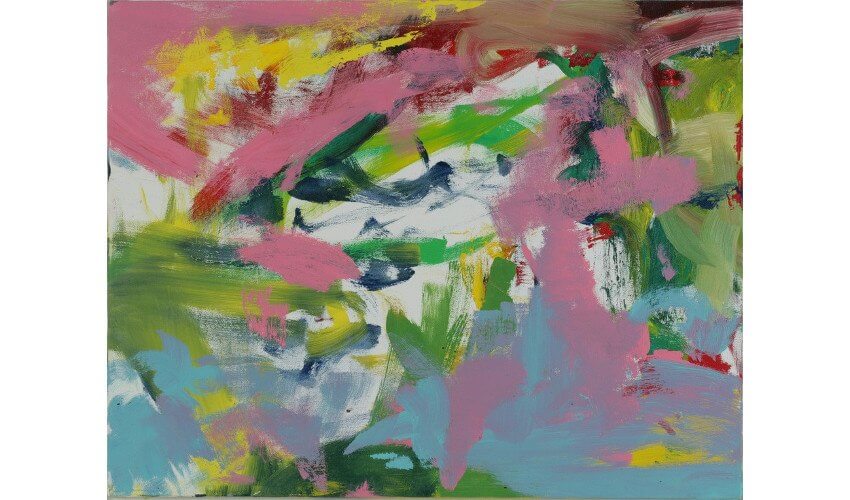 One of the last paintings by Willem de Kooning, an untitled work from 1989, oil on canvas, 28 ½ x 22 in., image courtesy of Keno Auctions
One of the last paintings by Willem de Kooning, an untitled work from 1989, oil on canvas, 28 ½ x 22 in., image courtesy of Keno Auctions
The De Kooning Legend
At a glance Willem de Kooning had an extraordinary life: coming to America as a stowaway, living as an illegal immigrant for decades, then becoming immersed in a group of artists who would change the world. Yet he was only human. He experienced ups and downs, took risks and followed his heart. He struggled with addiction, broke the hearts of lovers and failed to live up to his own expectations. He was earnest, sincere, and forever plagued by self-doubt. He was both extraordinary and utterly ordinary.
What makes him stand out is perhaps his fortitude. He never ceased to push himself. The spirit of that 12-year old boy who left school to pursue a creative career stayed with De Kooning his entire life, and he served that spirit well. It is fitting that the Rotterdam Academy of Fine Arts and Techniques, where De Kooning attended night school as a teenager, changed its name after De Kooning died to the Willem de Kooning Academie. What better testament to an artist who remained consistently true to his art, his intellect, his passion, and to the intrepid spirit of youth.
Featured image: Willem de Kooning - Excavation, 1950, oil and enamel on canvas, 81 x 100 1/4 in., The Art Institute of Chicago, © The Art Institute of Chicago
All images used for illustrative purposes only
By Phillip Barcio






